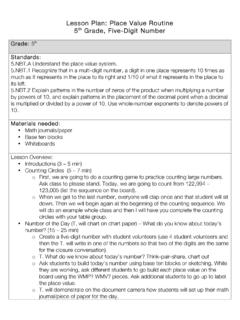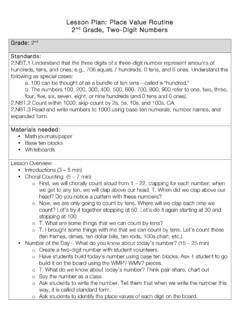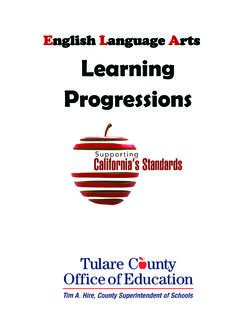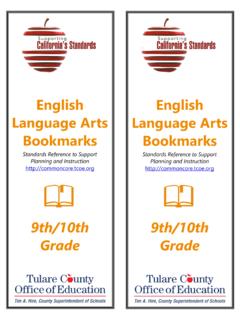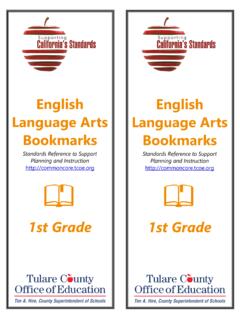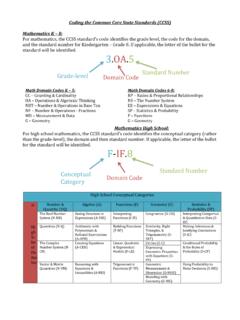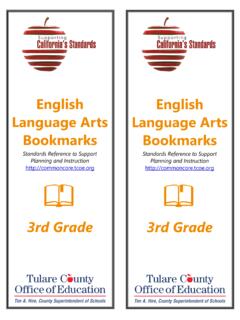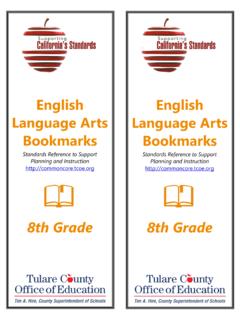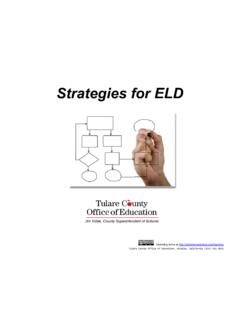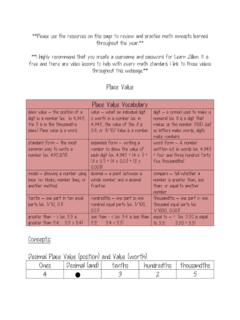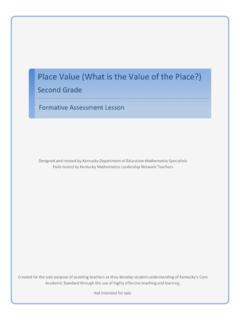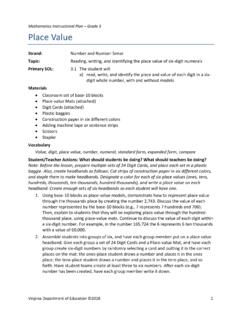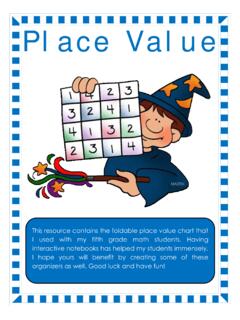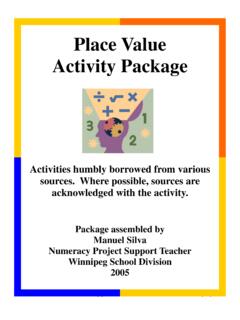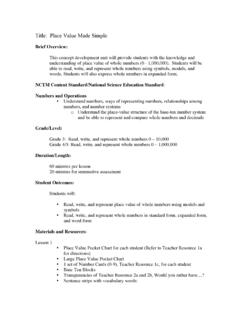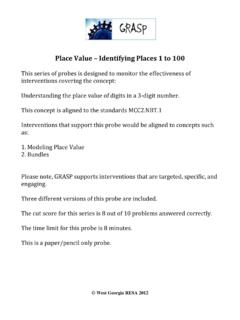Transcription of Lesson Plan: Place Value Routine rd Grade, Three-Digit …
1 Lesson plan : Place Value Routine 3rd Grade, Three-Digit Numbers Grade: 3rd Standards: - Use Place Value understanding to round whole numbers to the nearest 10 or 100. Materials needed: Math journals/paper Base ten blocks Whiteboards Lesson Overview: Introductions (3 5 min) Choral Counting (5 min) o First, we will chorally count aloud from 1 38, clapping for each number, when we get to any ten, we will clap above our head. T. When did we clap above our head? Do you notice a pattern with these numbers? What ten would be the next to clap over our head? Is 38 closer to 30 or 40? How do you know? Yes, 38is only 2 away from 40, so 38 rounded to the nearest ten is 40. Number of the Day What do you know about today s number? (15 25 min) o Create a Three-Digit number with student volunteers.
2 Pull digits from bag. o Have students build today s number using base ten blocks. Ask 1 student to go build it on the board using the WMP? WMV? pieces. o T. What do we know about today s number? Think-pair-share, chart out o Say the number as a class. o Ask students to write the number. Tell them that when we write the number this way, it is called standard form. o Ask students to identify the Place values of each digit on the board. o Next, have the students say the word in slow motion voice as the teacher writes it in word form. Tell them that when we write the number this way, it is called word form. o Have students look at how they built the number. Tell them that now we are going to make a quick math sketch for this number. This means that we are drawing to help us understand the number and not for an art project, so we draw differently.
3 J o Ask students to look at their drawings. T. How many hundreds do we have (number of hundreds)? How many tens do we have (number of tens)? How many ones do we have? Write it on the board, 6 hundreds, 4 tens, 7 ones. What is the Value of the hundreds (total amount)? What is the Value of the tens? What is the Value of the ones? Model how to write the number in expanded form, 600 + 40 + 7 = 647 and tell the students that this is called expanded form. o Identify the placement of today s number on a number line. T. Can you think about 2 numbers that are smaller than today s number? Pair-share T. Can you think about 2 numbers that are larger than today s number? Pair-share. o T. randomly places these numbers on the number line. Prompted, S. suggest to the T. where the numbers should appear on the number line.
4 T. invites S. to Place the numbers correctly. What does the placement of these numbers on the number line tell you? Should these numbers be next to, close to, or far apart from each other? Explain why? Class Conversation: o Where would we Place today s number? What do you notice about the numbers on the number line? Where is today s number in relation to the other numbers? o If we counted by tens, what would be the closest ten from today s number? So, what would be today s number rounded to the nearest ten be ( 650)? o What does rounded to the nearest ten mean? o Explain one idea you learned, today. Share with your shoulder partner. Partner Practice: o Now, I am going to have you work on a new number with your partner while your teacher and I talk about the ideas that you shared.
5 O Have two students pull out digit cards to create the new number on the board. Say the new number with the whole class twice and release students to begin partner work. o Ask students to complete selected prompts during this time. Include: Write the number rounded to the nearest ten. Anticipated Student Responses: Students may struggle with rounding 38 to the nearest ten of 40. Students may draw today s numbers using dots or including all of the lines in the tens, etc. Sketches may look different throughout the room. Possible Teacher Questions: Ask S. what number is after 38? 39. Is 39 a number we count as a ten? How might we create a quick sketch to show this piece without drawing all of details? Facilitate a conversation to streamline the drawings. Reflection/Observation Questions: What are students saying and doing?
6 What ideas/strategies did students use? What ideas/strategies did students share? What are your next steps to continue the learning from this math Routine ? Resources: Number Literacy: What s My Place ? What s My Value ? by Debby Head and Libby Pollett, Illustrative Mathematics, Number Sense routines : Building Numerical Literacy Every Day in Grades K-3 by Jessica F. Shumway. Lesson plan created by Sophia Burr, K-8 Math Coach, Dinuba Unified School District.
